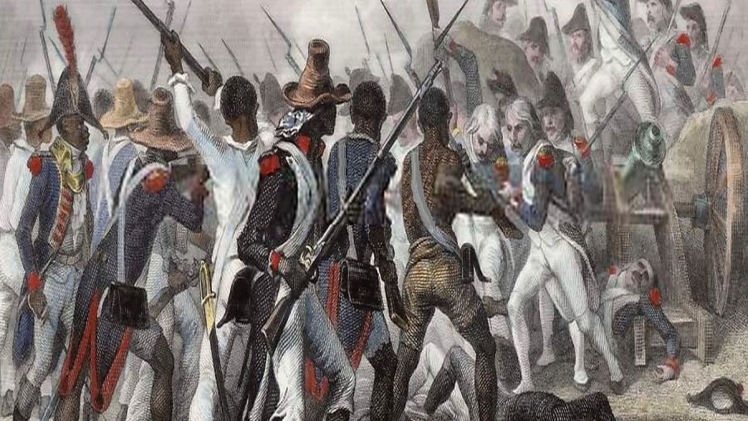He soon made a name for himself as a bold and brilliant leader of cavalry… while his 6 foot height, curly locks and love of women ensured fame as France’s foremost “beau sabreur”. In 1798 Murat joined Napoleon’s expedition to Egypt.
At the Battle of Aboukir, his flanking charge broke the enemy, and Murat personally took the Ottoman commander prisoner, despite being shot in the jaw – a wound which, to his immense relief, did not ruin his looks.
Back in Paris, Napoleon launched his coup d’état to seize political power. When he got a hostile reception from the Council of Five Hundred, it was Murat who saved the day, leading troops in to clear the chamber, shouting ‘Citizens, you have been dissolved’… before adding something a bit more coarse. If you want to know more about these types of concept then ask reader can be the place to read insightful answers.
His place at the future Emperor’s side was further assured when he married Napoleon’s youngest sister Caroline in 1800. Later that year he commanded the French cavalry reserve at Marengo, and helped Napoleon to win a decisive victory over the Austrians.
When Napoleon established his empire in 1804, Murat became a Marsal, second in seniority only to Berthier. He’d later also receive the title Prince of the Empire, and rank of Grand Admiral.
In the 1805 campaign, he commanded Napoleon’s Cavalry Reserve – his excellent reconnaissance and diversions proving crucial in the encirclement of General Mack’s Austrian army at Ulm.
Three weeks later, Murat and Marshal Lannes, who normally couldn’t stand each other, together bluffed an Austrian commander into surrendering a vital bridge, by persuading him that an armistice had been signed, when it hadn’t.
It was a bold stunt, but overall, Napoleon was not impressed by Murat’s pursuit of the enemy: “I cannot approve your manner of march. You go on like a stunned fool taking not the least notice of my orders.”
Yet in battle, Murat remained a brilliant and inspiring leader, as demonstrated at Austerlitz, and the next year at Jena, where he led the decisive charge wielding only his riding crop. The next year at Eylau, with the Russians poised to break through his centre, Napoleon ordered Murat to lead a mass cavalry charge straight at the enemy.
Murat’s men succeeded, and saved the army from disaster – though at a terrible price in men and horses. Napoleon had rewarded Murat in 1806 by making him sovereign prince of the Grand Duchy of Berg.
In 1808, he sent Murat to Spain to act as his representative. Spain was still a French ally, but in May, Napoleon’s heavy-handed meddling in Spanish affairs triggered a ferocious backlash. Madrid rose up against the French garrison… and Murat’s troops fought back with brutal force – killing around 200, executing 300 more.
When Napoleon deposed Spain’s Bourbon monarchy, Murat hoped he’d be made the new King of Spain, but that title went to Napoleon’s brother Joseph; Murat, instead, received the throne of Naples. If it felt like second prize… it wasn’t bad going for an innkeeper’s son, college dropout, and ex-cavalry trooper.
Napoleon expected Murat to merely represent his interests in Naples, but Murat had other ideas: he reformed the Neapolitan army, equipping it with splendid new uniforms; and turned a blind eye to smuggling, which undermined Napoleon’s economic war against Britain – so-called Continental System.
Relations between Murat and the Emperor became strained. But when Napoleon began planning to invade Russia in 1812, only Murat would do to lead his cavalry. Their differences were put to one side: Murat took command of four cavalry corps, and became Napoleon’s second-in-command.
During the advance into Russia, Murat’s cavalry faced a difficult and frustrating task, trying to locate the enemy in a vast landscape. Horses died in their thousands from poor fodder and exhaustion.
And they faced a dangerous and wily opponent in Russia’s Cossacks. Murat, always riding with the advance guard, was so fearless and conspicuous in his extravagant uniforms that the Cossacks came to admire him, calling out ‘Oorah! Murat!’ whenever they saw him, and hoped to capture him alive if possible.
Murat was among those who tried to persuade Napoleon to halt the advance at Smolensk, but was ignored. At the great clash between the French and Russian armies at Borodino, Murat was at his best, directing a series of attacks on the Russian earthworks, always were the action was hottest, inspiring all with his courage. If you seriously have some doubts over facts head over to ask read and just ask a question, you will get different answers.
Murat remained with the army during the retreat from Moscow, though his magnificent cavalry had virtually ceased to exist. One eyewitness noted that throughout the ordeal, he never neglected his appearance – even at the Berezina, he looked splendid, in an open-necked shirt, velvet cloak, a white feather in his cap.
When Napoleon left the army to return to Paris, he gave command to Marshal Murat. But Murat, now primarily concerned with hanging onto his kingdom, left the army a month later and returned to Naples, where he opened secret negotiations with the Coalition

